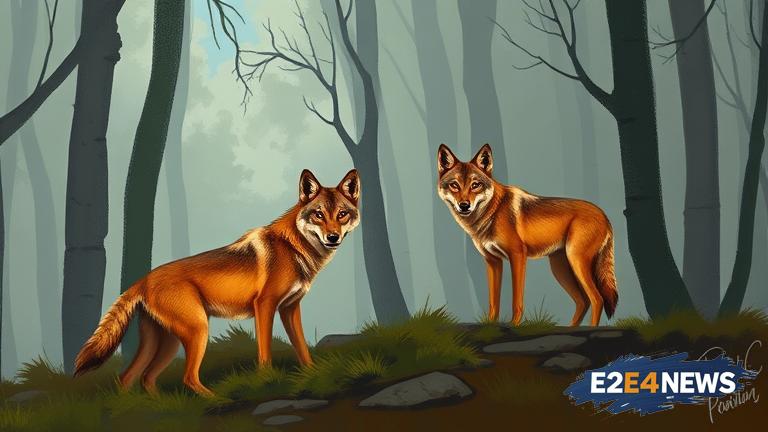The red wolf, one of the most endangered canines in the world, has been a subject of concern for wildlife conservationists in North Carolina. With only around 40 individuals remaining in the wild, the population is fragile and requires immediate attention. The red wolf was once declared extinct in the wild, but a captive breeding program helped reintroduce the species in the 1980s. However, the population has been declining due to various factors such as habitat loss, human-wolf conflicts, and disease. Conservation efforts are being made to protect the red wolf, including the creation of a 1.7 million-acre recovery area in eastern North Carolina. The recovery area provides a safe habitat for the wolves to roam and hunt, and it also helps to reduce human-wolf conflicts. Additionally, the US Fish and Wildlife Service has implemented a program to monitor the population and prevent inbreeding. Despite these efforts, the red wolf population is still facing numerous challenges, including the lack of genetic diversity and the presence of coyotes, which can interbreed with wolves and produce hybrid offspring. Furthermore, climate change is also affecting the population, as it alters the availability of prey and habitat. The decline of the red wolf population has significant implications for the ecosystem, as wolves play a crucial role in maintaining the balance of nature. Without wolves, prey populations can explode, leading to overgrazing and degradation of habitats. The loss of the red wolf would also have cultural and symbolic significance, as it is an important part of North Carolina’s natural heritage. Efforts are being made to educate the public about the importance of conserving the red wolf, and to engage local communities in the conservation process. The Red Wolf Coalition, a non-profit organization, is working to promote the recovery of the species and to protect its habitat. The organization is also collaborating with other conservation groups, such as the Defenders of Wildlife, to raise awareness about the plight of the red wolf. In addition, the North Carolina Wildlife Resources Commission is working to develop a comprehensive plan to conserve the species. The plan includes measures such as habitat protection, population monitoring, and conflict mitigation. Overall, the conservation of the red wolf is a complex and ongoing process that requires the collaboration of multiple stakeholders, including government agencies, non-profit organizations, and local communities. It is essential to continue conservation efforts to protect this iconic species and to preserve the natural heritage of North Carolina.
